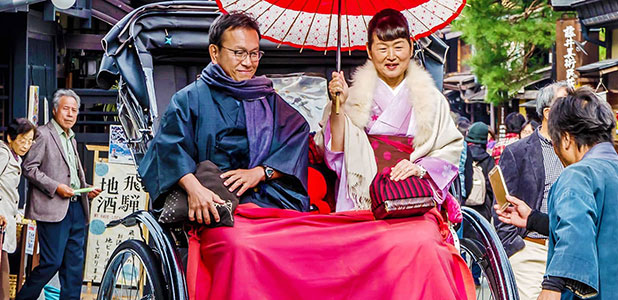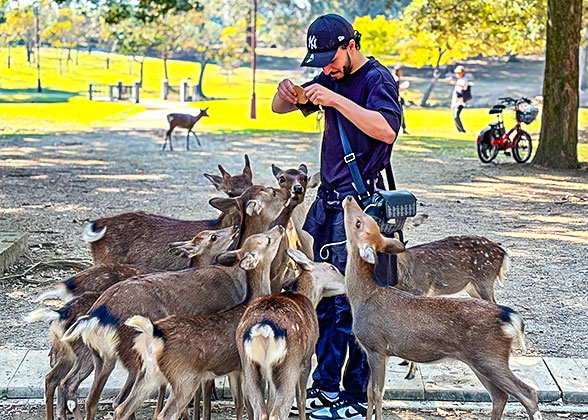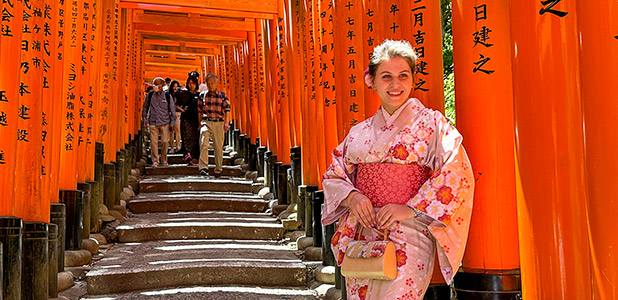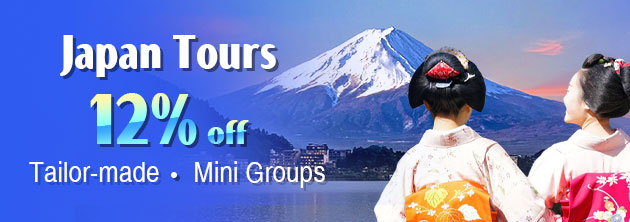Best Time to Visit Hakata
What’s the best time to visit Hakata?
Spring: March - May
Spring in Hakata features pleasantly balmy weather with relatively low precipitation, which is more favorable for outdoor travel, even hiking. Besides, there is a long duration of daylight in this time, allowing you to slow down and spend more time on each attraction.
During the springtime, one highlight is vibrant flowers of various types. The cherry blossom season is from late March to early April, when the whole region is adorned with different types of cherry blossoms in full bloom, as if you stepped into a dreamlike wonderland in pink and white hues. Lots of people head for Kushida Shrine, Reisen Park, Sanno Park and Maizuru Park to capture this imposing scene with their camera. Except for Sakura, camellias, wistarias and roses can also be seen.
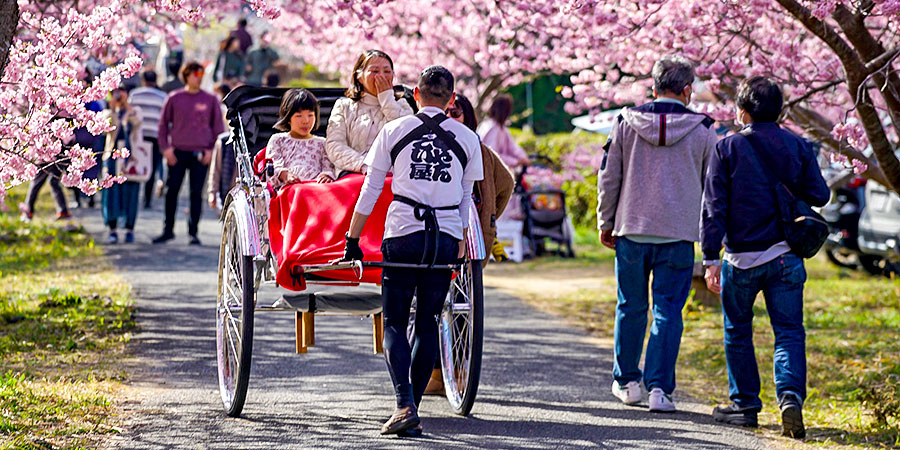
Rickshaws in Cherry Blossom Season
|
Also, a wealth of grand events is worth experiencing, particularly Hakata Dontaku Port Festival from May 3 to 4, from which you have a precious opportunity to not only learn about local culture and history, but also feel the festive atmosphere among passionate Japanese citizens.
Autumn: September - November
In autumn, most days are cool and comfortable. Especially starting from October, the weather tends to stabilize with more sunny days, but the sunlight is less intense than in summer, giving you a more pleasant travel experience.
The autumn foliage season lasts from middle November to early December. Fall leaves cover Maizuru Park and Momiji Hachimangu Shrine with a red and golden cloak. Shofuen and Rakusuien are two hidden gems, where you can sip tea while appreciating Japanese gardens against the backdrop of colorful autumn scenery.
Hakata hosts various activities during this time, too, including Hakozaki Shrine Hojoya Festival on September 12 - 18, music festivals at weekends from middle to late September, Nakasu Festival in late October, Grand Sumo Tournament and night illumination shows both starting from middle November, all of which fully shows the perfect blend of Hakata’s tradition and modernity.
|
|
|
High Season: Late March - Early April & Middle November - Early December
During these two periods, the region receives more domestic and foreign tourists, resulting in such problems: your travel spending increases significantly, mainly due to the higher prices of hotels and airline tickets; you need to arrive at attractions as early as possible to avoid long waits; the overall travel environment is relatively noisy.
Low Season: Middle May - June & September - Early November
The low season is more suitable for those who seek value for money or prefer a less-crowded trip. There are huge discounts on airfare and more flight options available. Plus, hotel prices return to the normal range and high-quality room types can be easily booked. More importantly, restaurants, stores and scenic spots receive fewer tourists, making your trip more comfortable.Do note that June falls in the rainy season, when persistent and frequent rainy or cloudy days occur.

Stores of JR Hakata City
|
Times Not Recommended to Visit Hakata
Muggy and Crowded July and August
During these two months, the weather is not favorable for travel. Specifically, daily highs are often 30 - 35℃ (86 - 95℉), and though the rainy season ends in mid-July, August may experience similar weather conditions when sultry air encounters a stationary front. Therefore, because of high temperatures and high humidity, you feel all hot and sweaty after just walking outside for several minutes.
What’s more, these periods right coincide with Japanese summer vacation, when all travel destinations and public transportation are packed with people. Accordingly, accommodations and flights are not only difficult to secure but also expensive.

July Hakata Gion Yamakasa
|
Crowded Japanese Public Holidays
If you plan to visit Hakata in 2025 or 2026, you are advised to avoid the following public holidays: Golden Week usually from late April to early May and New Year holidays from late December to early January. During these two months, what impress you the most is not beautiful natural landscapes and magnificent historical architectures, but the throngs of people. Meanwhile, hotel fees and airfare may double due to the shortage of supply. Of particular note is that some restaurants and attractions are usually shut down during the New Year holidays. For instance, Fukuoka Asian Art Museum is closed from December 26 to January 1.Travel Suggestions
1. March to April is the peak period of pollen spread, so individuals with a sensitive nose should take relevant precautions.2. As Hakata is most likely to be affected by typhoons from July to September, which brings high winds and heavy downpours, regularly check the weather forecast and arrange your schedule flexibly.


